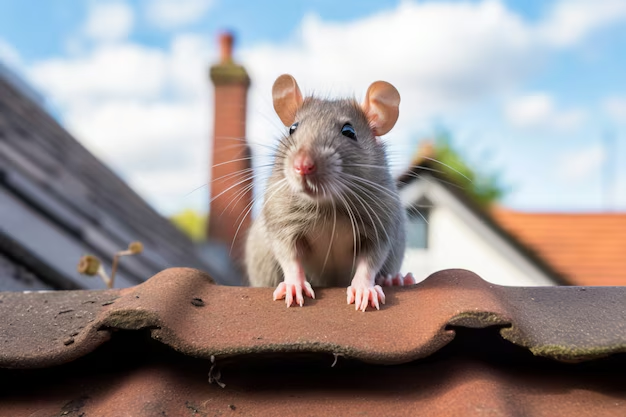Discovering the Roof Rat: Understanding and Managing This Common Pest
You might have heard the name roof rat floating around in pest control conversations, but what exactly is it? Known scientifically as Rattus rattus, the roof rat is a common rodent that has taken up residence in many urban and suburban settings worldwide. These critters are often confused with their cousin, the Norway rat, but they have distinctive features and behaviors that make them unique.
Identifying the Roof Rat
Physical Characteristics:
Roof rats are typically smaller and slimmer than Norway rats, with a weight ranging between 5 to 10 ounces. They have a pointed nose, large eyes and ears, and a tail longer than their body. Their fur is usually smooth, with colors ranging from black to light brown.
Behavior and Habitats:
These agile rodents are excellent climbers, using their skills to nest in high places like attics, roofs, and trees. They’re active primarily during the night and are most often found in coastal and warm environments.
Are Roof Rats a Problem?
Yes, roof rats can pose significant health and structural risks. They are notorious for carrying diseases like typhus, leptospirosis, and salmonella, which can be transmitted to humans and pets. Moreover, they are damaging to homes as they can chew through wiring, insulation, and wood, which might lead to costly repairs and even fire hazards.
How to Manage Roof Rat Infestations
Prevention:
It's crucial to take preventative measures to keep these pests at bay. Ensure that your home is sealed tight by closing off potential entry points, trimming back trees and foliage around the house, and maintaining good sanitation practices to eliminate food sources.
Professional Help:
If you suspect an infestation, hiring a professional pest control service could be the best action. Professionals have the expertise and tools to safely and effectively eliminate roof rats.
Transitioning to Financial and Educational Resources
In today's world, much like managing pests, handling financial challenges requires informed strategies. Whether you're facing debt, need educational support, or financial assistance, knowing where to turn can make all the difference. Just as you might enlist professional help for pest control, consider seeking expert advice for financial management.
Here are some resources and programs to consider:
Government Aid Programs:
Explore options like housing assistance, unemployment benefits, and healthcare subsidies that can offer necessary support when navigating financial troubles.Debt Relief Options:
Consider credit counseling, consolidation programs, or negotiation services to manage or reduce debt more effectively.Credit Card Solutions:
Look into balance transfer cards, low-interest options, or reward programs that can help manage expenses or even provide financial benefits.Educational Grants and Scholarships:
Investigate scholarships, grants, and other educational funds that could ease the burden of tuition and other expenses associated with higher education.
By taking advantage of these opportunities, you can find ways to alleviate financial stress and invest in your future, just as you would invest in maintaining a pest-free home.
Financial and Educational Resources to Explore:
- 🏠 Housing Assistance: Find help with rent and mortgage payments through government and local programs.
- 📉 Debt Consolidation: Streamline debts with a single monthly payment through consolidation services.
- 💳 Credit Card Solutions: Utilize cards with benefits that suit your lifestyle, whether for rewards or lower interest rates.
- 🎓 Educational Grants: Access funding opportunities like Pell Grants and state-specific scholarships to support educational pursuits.
- 💸 Financial Counseling: Seek advice from certified financial planners to navigate complex financial situations.
